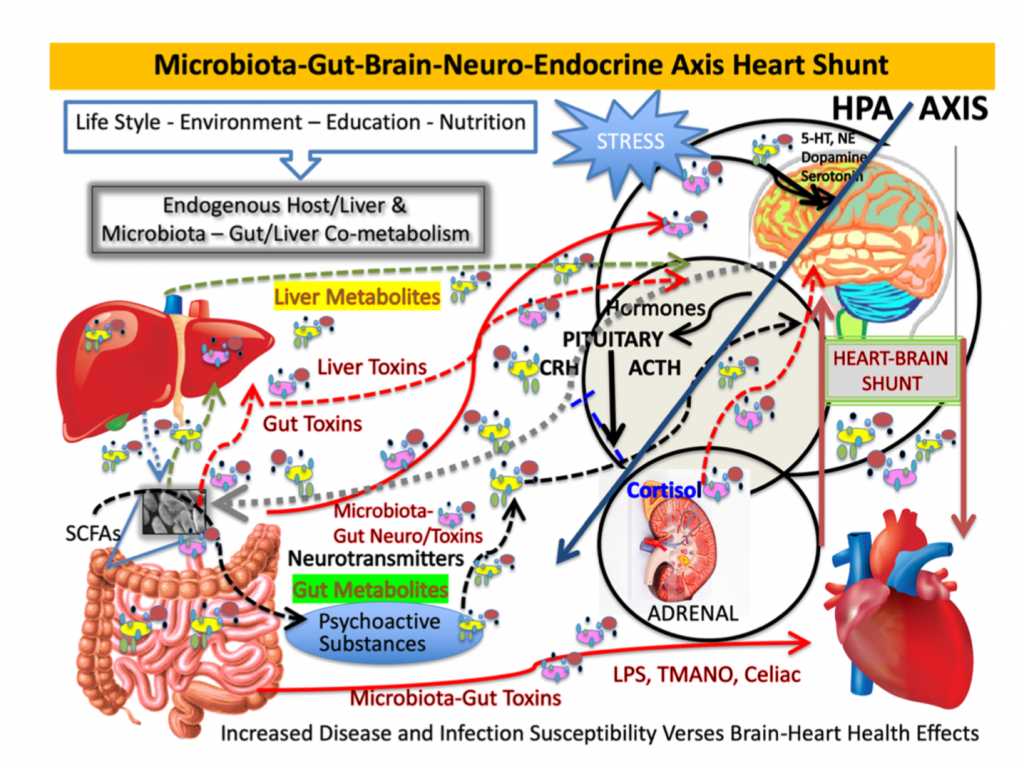In second of a two-part series on the French Paradox, researchers researchers explore the concept of a heart shunt within the microbiota-gut-brain axis and underscore the close association between brain and heart health. The so-called French Paradox offers clues for understanding neurodegenerative and cerebrovascular such as Alzheimer’s disease (AD). Read Part 1.
Introduction (excerpt)/ New and growing evidence links the trillions of microbes that inhabit the human gastrointestinal tract to neurological conditions and diseases. What is good for the heart is good for the brain, and the concept of a heart shunt within the microbiota-gut-brain axis underscores the close association between brain and heart health. Moreover, oxidation–reduction reactions and redox properties of so-called brain and heart-protective foods are underappreciated, as are any enhanced or deleterious mechanisms of action involving such small molecular compounds.

It is well established that a vegetarian and polyphenol-rich diet, including fruits, vegetables, teas, juices, wine, indigestible fiber, and whole grains, provides health-promoting phytochemicals and phytonutrients that are beneficial for the heart and brain. What is not well characterized is the effect these foods have when co-metabolized within our dynamic gut and its colonizing flora. This study explains the French paradox and prosaic foods, as they relate to the microbiota-gut-brain axis and neurodegenerative diseases, such as AD.

In this study you will learn:
- Modulating AD through Prosaic Foods and Drugs
- Oxidation–Reduction Reactions Involving the Brain and Mammalian Gut
- Statins, Other Natural Statin-Like Compounds, Small G-Proteins, and G-Protein Coupled Receptor and Cognate Kinase 2 (GRK2) in AD
- The Microbiota–Gut–Brain Axis–Heart Shunt Part II: Prosaic Foods and the Brain–Heart Connection in Alzheimer Disease
- AD-Protective Foods and the Microbiota
- Microorganisms Found in Alzheimer Disease
- Oligomers, Aβ-Derived Diffusible Ligands (ADDLS), Amyloid Fibrils, and Conformational Protein Changes
Conclusion/ These findings demand that we explore the microbiota of the French and the co-metabolism of paradoxical foods, maybe even coupled with red wine polyphenols, in rodent and culture models. In that way, we may elucidate a mechanism and advance our understanding of how prosaic foods, in the right combination or with wine polyphenolic acids, could serve to prevent intractable neuronal disease. Perhaps, one day, we will consume a designer symbiotic and, thus, have our cake and eat it too, and, if Marie Antoinette were extant, she might rephrase her famous quote to say “Qu’ils mangent lentement et qu’ils mangent de la brioche, mais qu’ils n’oublient pas du vin!” (translation: “Let them eat slowly and let them eat cake, but let them not forget some wine!”); however, until such time, “à votre santé!” (translation: “to your health!”).





